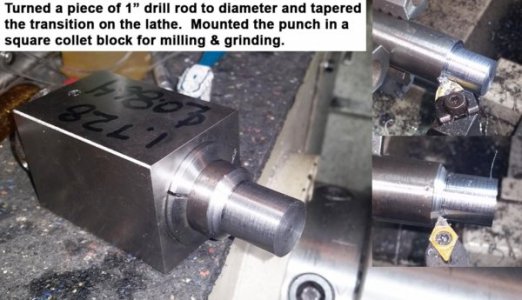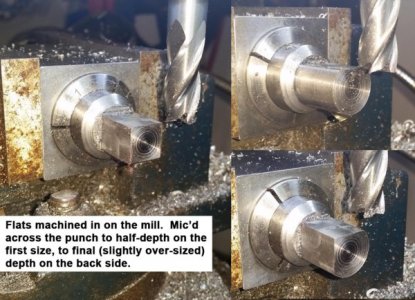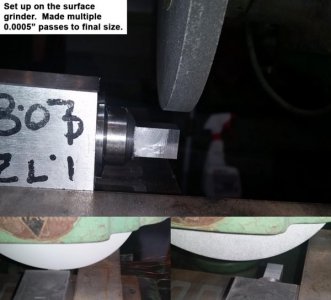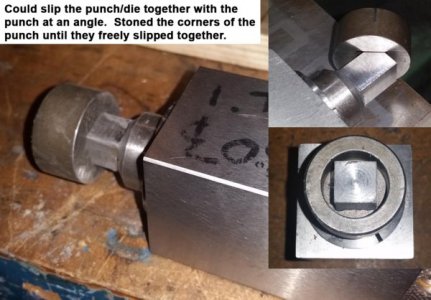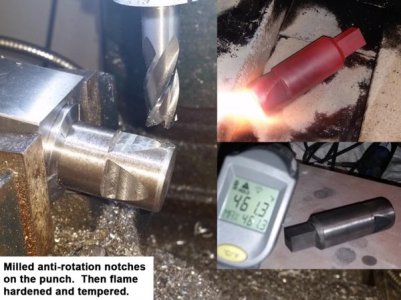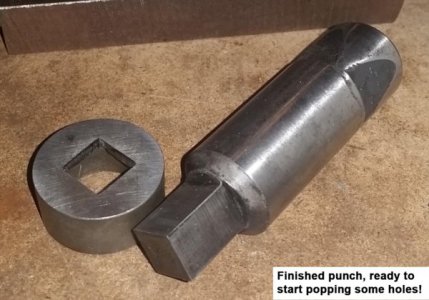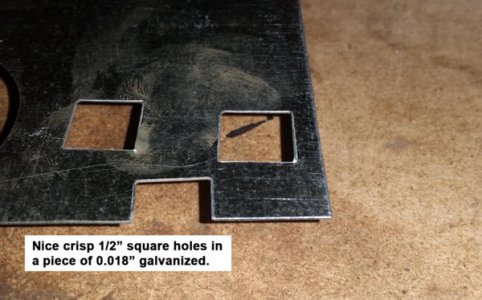POTD was making a tighter clearance ½” square punch to match a die. I have a project that needs ½” notches on the edge in 0.018” thick 304 stainless. Happened to have a sharp ½” square punch, but it did a crappy job shearing. Regardless of how I aligned the punch and die, ended up with a folded tab instead of a shear on one edge. I read on the web that punch to die clearance should be 20% of material thickness for plain steel and 25% of material thickness for stainless.
The die opening checked at 0.508” square, punch checked at 0.485” or WAY too much clearance for 0.018” stock. The total clearance should be 0.0045” per the on-line recommendations for a punch diameter of about 0.503". So, time to make a new punch.
Started with a piece of 1” drill rod. My Roper Whitney #218 press takes punches either ½” or 1” diameter. Optimal punch size would be 0.503”, so Mr. Pythagorean said I needed a rough diameter of 0.711”. I chose to go a little larger since the squaring would be done to close to final size on the mill.
After turning to size, the punch was mounted in a 5-C collet and held in a square collet block. Went to the mill and machined the flats to a 0.510” square. Did the math on the diameter vs. half-depth and made passes to that number on the first two sides. Then went to the final (over-sized) depth on the opposite sides. Pretty simple operation using a square collet block.
After milling went to my Delta Milwaukee surface grinder for final sizing. Dusted the last 0.007” off there. Took off 0.0005” on all 4 sides to remove the mill marks, then dusted to final size on two of the 4 sides.
I could slip the punch and die over each other after grinding, but only if the punch was at an angle. The ½” die has a slight radii in the corners so the punch corners needed some work. Stoned in a radius on the corners until the punch and die slid over each other. Then to the welding bench for flame hardening with an oxyacetylene torch and tempering on a Thermolyne hot plate.
Proof in the pudding was checked on a piece of 0.018” galvanized stock, no problems and nice crisp edges. On to the next project . . .
Bruce
View attachment 235555 View attachment 235556 View attachment 235557 View attachment 235558 View attachment 235559 View attachment 235562 View attachment 235563



